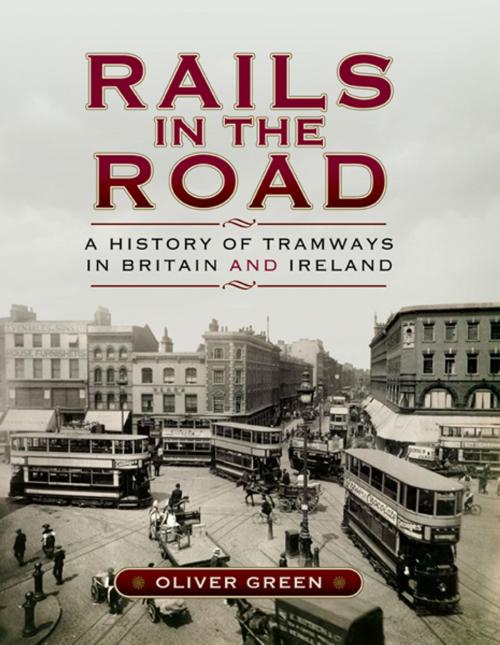Rails in the Road
A History of Tramways in Britain and Ireland
Nonfiction, Reference & Language, Transportation, Railroads, History, Ireland, British| Author: | Oliver Green | ISBN: | 9781473869400 |
| Publisher: | Pen and Sword | Publication: | October 31, 2016 |
| Imprint: | Pen and Sword Transport | Language: | English |
| Author: | Oliver Green |
| ISBN: | 9781473869400 |
| Publisher: | Pen and Sword |
| Publication: | October 31, 2016 |
| Imprint: | Pen and Sword Transport |
| Language: | English |
There have been passenger tramways in Britain for 150 years, but it is a rollercoaster story of rise, decline and a steady return. Trams have come and gone, been loved and hated, popular and derided, considered both wildly futuristic and hopelessly outdated by politicians, planners and the public alike. Horse trams, introduced from the USA in the 1860s, were the first cheap form of public transport on city streets. Electric systems were developed in nearly every urban area from the 1890s and revolutionised town travel in the Edwardian era.
A century ago, trams were at their peak, used by everyone all over the country and a mark of civic pride in towns and cities from Dover to Dublin. But by the 1930s they were in decline and giving way to cheaper and more flexible buses and trolleybuses. By the 1950s all the major systems were being replaced. London’s last tram ran in 1952 and ten years later Glasgow, the city most firmly linked with trams, closed its network down. Only Blackpool, famous for its decorated cars, kept a public service running and trams seemed destined only for scrapyards and museums.
A gradual renaissance took place from the 1980s, with growing interest in what are now described as light rail systems in Europe and North America. In the UK and Ireland modern trams were on the streets of Manchester from 1992, followed successively by Sheffield, Croydon, the West Midlands, Nottingham, Dublin and Edinburgh (2014). Trams are now set to be a familiar and significant feature of twenty-first century urban life, with more development on the way.
There have been passenger tramways in Britain for 150 years, but it is a rollercoaster story of rise, decline and a steady return. Trams have come and gone, been loved and hated, popular and derided, considered both wildly futuristic and hopelessly outdated by politicians, planners and the public alike. Horse trams, introduced from the USA in the 1860s, were the first cheap form of public transport on city streets. Electric systems were developed in nearly every urban area from the 1890s and revolutionised town travel in the Edwardian era.
A century ago, trams were at their peak, used by everyone all over the country and a mark of civic pride in towns and cities from Dover to Dublin. But by the 1930s they were in decline and giving way to cheaper and more flexible buses and trolleybuses. By the 1950s all the major systems were being replaced. London’s last tram ran in 1952 and ten years later Glasgow, the city most firmly linked with trams, closed its network down. Only Blackpool, famous for its decorated cars, kept a public service running and trams seemed destined only for scrapyards and museums.
A gradual renaissance took place from the 1980s, with growing interest in what are now described as light rail systems in Europe and North America. In the UK and Ireland modern trams were on the streets of Manchester from 1992, followed successively by Sheffield, Croydon, the West Midlands, Nottingham, Dublin and Edinburgh (2014). Trams are now set to be a familiar and significant feature of twenty-first century urban life, with more development on the way.















